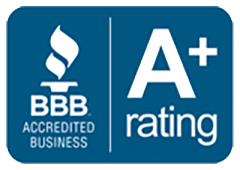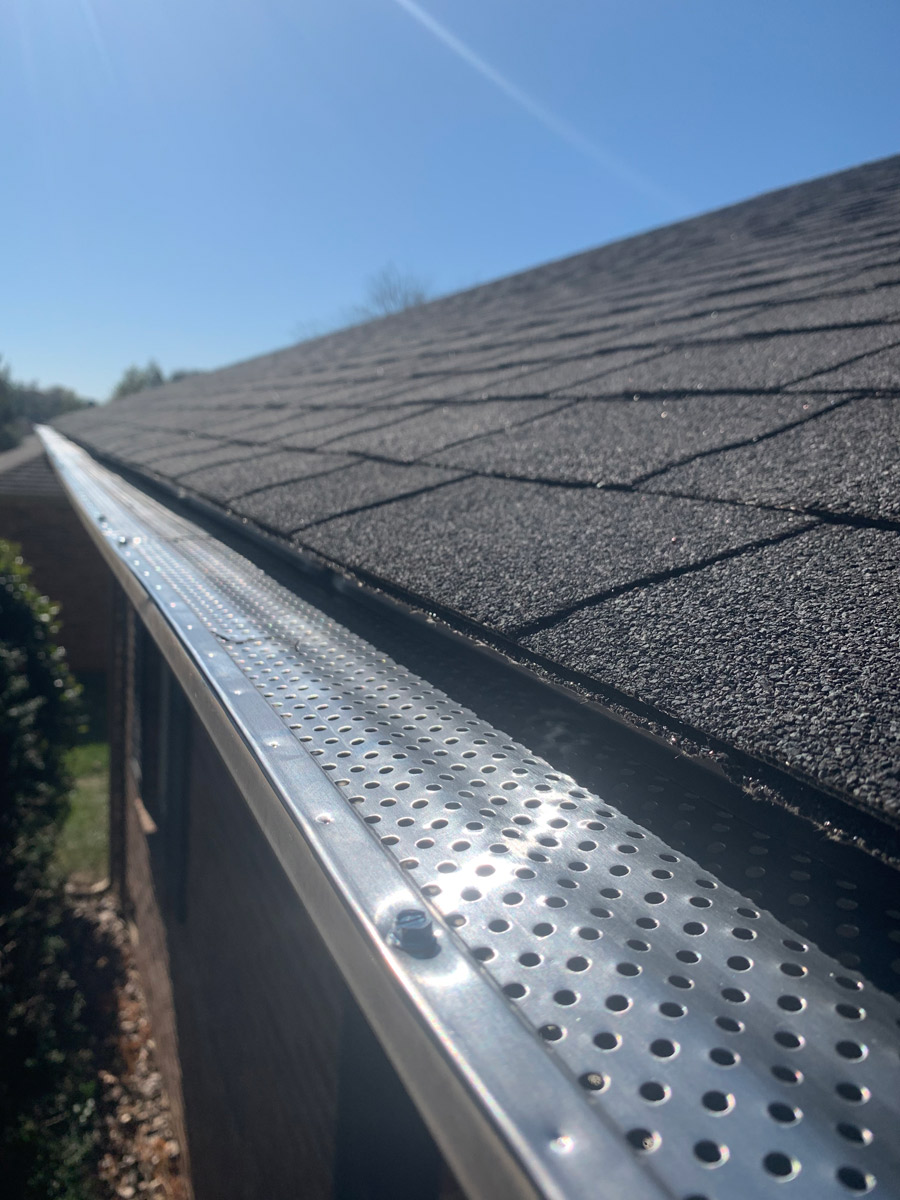Repainting vs. Replacing Siding: Making the Right Choice for Your Home When it comes to sprucing up your home’s exterior, you’ve got two main options: repainting your existing siding or replacing it entirely. Both have their own perks and drawbacks, and the best choice really depends on your budget, the...Read More
Installed by experts with years of experience, delivering the best value new roof to protect your house.
As the premier contractor in the Pacific Northwest for roofing replacements, we have replaced more than 4,000 roofs. When your house needs a new roof, look to HPH. We proudly offer the High Performance Roof—the best asphalt roof designed specifically for our region. This ultimate roof design combines a high-quality shingle, underlayment, and valley metal to protect your house. Plus, our unparalleled 50-year labor warranty makes it America’s Most Recommended Roofing Product. We are a Street of Dreams roofing installer, licensed, bonded, and insured in Oregon and Washington. We also provide superior financing from several high-caliber financial institutions.
Your journey starts with a personalized consultation to understand your needs and preferences and ends with a meticulous execution of the project, with regular updates along the way.


We are a trusted roofing company, proudly standing behind the quality of our work and the products we deliver.
New Roof Installation by Experienced High-caliber Technicians
Durability Built for PNW Weather
Thousands of Happy Customers
50-Year Shingle Warranty
50-Year Labor Warranty
Reduced Insurance Premium
HOA Approved Options


A Platinum Preferred Roofing Contractor
We are a roofing contractor certified and screened at all levels of program membership by Owens Corning Roofing Contractor Network. This certification is only given to the top tier of the network, which meets strict standards for professionalism, reliability, and unparalleled craftsmanship.
High Performance Roof Specifications
| Wind Resistance: | 130 MPH |
| Underlayment: | Synthetic |
| Valley Metal: | 24” Width |
| Lead Pipe Jacks: | Highest Quality |
| High Profile Ridge Vent: | Balanced Venting |
| Ice & Water Protection: | Entire Perimeter |
| Algae Resistance: | 25-years |
| SureNail Technology: | Outstanding Grip |
| Limited Lifetime Warranty: | 50-years |
High Performance Roofing Systems
Our seasoned professional installation team can deliver.
Asphalt Roof
Designer Roof Shingles
Metal Roof
Standing Seam Roof
Have an Expert Take a Look at Your Roof
Our High Performance Roof Inspection is performed by an experienced and trained HPH specialist. This complimentary service includes; a review of the current roof system, examining the roof venting system, and inspecting the attic for moisture, mold, and leaks. We examine shingle quality and determine the shingle’s remaining life.
Finally, the technician determines the expected life of your roof and whether you need a roof replacement for your house. If you need a replacement we can give you a roofing replacement cost at that time.
Better Than New Roof in
Three Easy Steps
Book an Estimate
1

It's time to break free from the constant worry about the next storm. Time to take control of your home's protection, and that starts with evaluating your roofing options.
This is where HPH shines as a reliable company with durable roofing solutions, that ensure your house stands strong against the Pacific Northwest elements. This peace of mind is invaluable, so researching and investing in a new roof is a step towards a more secure and stress-free living environment. Let's find the best roofing solution to keep your home safe and your mind at ease.
Have Inspection & Consultation
2

Meet with our roof estimator. You get a free assessment of the existing roofing structure, a check of the ventilation system, and an inspection of the attic for signs of dampness, mold, and leaks.
We also evaluate the condition of the shingles and estimate how much longer they will last. If you need service we can deliver a firm estimate and time frame on the spot. We then help with design and products that makes your house shine.
Get Installed
3

Have your new roof installed. As the leading contractor in the Pacific Northwest for replacement roofing, we have remodeled more than 5,000 homes. We are a proud Street of Dreams roofing installer, High Performance Homes is licensed, bonded, and insured.
We have developed exterior systems uniquely designed for the Northwest, emphasizing moisture protection and using products that withstand our rugged weather while offering lifetime durability. We deliver white-glove, red-carpet service, clear communication, and unwavering commitment to our promises.









Women’s Choice Award Recipient

This award is given by women for women. It is based on a national survey that measures brand preference by female consumers.
About the Award
The Women’s Choice Award sets the standard for helping women to make smarter purchasing choices. The company and its awards identify the brands, products and services that are most recommended and trusted by women.
Additionally, they recognize those that deliver a recommendation-worthy customer experience. Awards are based on surveys of thousands of women, as well as research conducted in partnership with the Wharton School of the University of Pennsylvania. As the trusted referral source for women, WomenCertified Inc., home of the Women’s Choice Award, created the first national award based on the ratings and preferences of women. Women can visit the official website at www.WomensChoiceAward.com to learn more.
Frequently Asked Questions
A new roof doesn’t have to match your old roof, and the opportunity to change styles, colors, and patterning are at your discretion. High Performance Homes is a roofing contractor that knows that performance is everything. Your roof defends your home from the elements, let’s make sure it doesn’t quit.
If your home needs a new roof installed, you can count on High Performance Homes for expert craftsmanship and a roof that endures for decades. Our expert technicians are standing by to help you with:
Owens Corning roofing systems, re-roofing, new roofs, repairs, skylight installations, metal roofing, flat roofing, gutter installation, and roof inspections.
Depending on the age of your roof, you may be able to get away with a temporary repair. We’ll always provide as many options as possible, a replacement roof may be the better choice, but if you’re noticing any of these signs: an attic that smells bad, an obvious leak, warped, cracking, or loose shingles, or missing shingles.
We’ll take the time to inspect your roof and present you with the best options. If we’re confident we can extend the life of your existing roof, our roofing contractors will get your roof back to a condition that will keep your home comfortable.
The Decking/Roof Assembly:
This is the first layer of support for your roof. Decking is made of several different materials, most often plywood or OSB panels. OSB provides additional protection because shaved layers of wood are compressed with waterproof glue. This creates nearly impenetrable protection from moisture damage if higher layers are compromised.
Weatherproofing/Underlayment:
The underlayer covers the frame of the roof. An underlayment is made of a waterproof membrane that acts as your last line of defense against water and your best line of defense against moisture. A poorly fitted underlayment may shrink and tear, fail to remain glued down, or leave open areas of exposure where mold can develop and get inside.
Reinforcement: Reinforcing the weatherproof membrane is key. This is accomplished using a variety of products but is most often done with polyester, bituminous, elastomer, resin, polypropylene, or hybrid layer. This is heavier than the underlayment and provides additional insulation, waterproofing, weight, and puncture protection.
Roof Covering/Surfacing: The roof covering is the final layer. That depends on your needs as a homeowner. Metal, wood, synthetic, clay, asphalt, and concrete are all viable options. Each has its own benefits and drawbacks, and we’ll help you determine which covering meets your aesthetic and durability needs. With the salt-water air coming in from the Puget Sound, we’ll often advise homeowners to stay away from metal.
We only employ roofing and siding specialists.
Too many companies try and hire jacks of every trade to cut down on costs. It might lower their costs, but it raises yours. Our roofing installers live and work off the ground. They have studied, trained, and practiced their craft, becoming veteran roofers in the process. The attention to detail and process knowledge cannot be duplicated by a multi-discipline employee.
We only use American made products.
We don’t just use American to give back to the economy and other local businesses. The U.S. crafted roofing materials we use to build your roof are designed with precision, durability, and care that other materials aren’t. This makes installation easier and helps your roof to easily reach or exceed its maximum advertised lifespan. Great materials just go further. We only use products from Owens Corning, a leading manufacturer of roofing materials. Our lines include Oakridge Shingles, TruDefinition Duration, Woodcrest, and Woodmoor.
We only install complete roofing systems.
Roofing systems do more for your home than individual components. They are designed and manufactured by a single company so that every layer works together. This improves protection over multi-manufacturer component roofs. That protection is also backed by a longer warranty. Because the manufacturer knows how those parts interact, they’ll guarantee them for a greater length of time.
High Performance Gutters
Having the right gutters protects your home from costly water damage, foundation problems, and even mold growth. Here’s what you need to know to choose the best gutters for your house:
What to expect from us
- Expert Advice: We provide a free inspection to assess your needs and recommend the perfect gutter system for your home with an accurate estimate.
- Durable Options: We offer 5k, 6k, and Fascia style gutters in aluminum, known for their strength, longevity, and resistance to rust.
- Long-Term Savings: Gutters prevent expensive repairs down the road, saving you money in the long run.
Learn More About Our High Quality Aluminum K-style Gutters
- K-style Fascia gutters: Known for their efficient water flow and unique shape, protecting your foundation and landscaping. They also come in a variety of colors and integrate seamlessly with your fascia board for a clean and stylish look.
- 5k gutters: A popular choice for affordability and durability.
- 6k gutters: A heavier gauge aluminum option ideal for areas with high rainfall or heavy snowfall.


What to Consider When Choosing Gutters
- Climate: We factor in your rainfall levels and weather conditions to ensure your gutters can handle the job.
- Roof Size: The size and complexity of your roof determine how much water your gutters need to manage.
- Maintenance: Gutter guards can simplify maintenance by keeping leaves and debris out of your gutters.
Considering Gutter Covers?
Gutter covers, also called helmets or guards, sit on top of your gutters and filter out debris. They’re a great option if you’d like to reduce the need for frequent gutter cleaning. We offer various types of gutter covers to suit your needs.
Explore Our Remodeling Blog
Matching Your Siding and Roof Colors: Six Tips to Follow The siding and roof are two of the most important components of your home. Not only do they serve as the first lines of defense against the elements, but they also play a crucial role in enhancing your home’s energy...Read More
How to Prepare for a Major Roofing Project Embarking on a major roofing project is a significant undertaking that should include planning and preparation. While it’s challenging to avoid all potential issues during the project, you can certainly minimize the hassle and ensure a smoother process. Here we examine insights...Read More
We are the premier contractor in the Pacific Northwest for replacement: roofing, siding, windows, and baths. We have remodeled more than 4,000 homes in the Portland Metro and Seattle area. We are a Street of Dreams roofing installer, High Performance Homes is Licensed, Bonded and Insured in Oregon and Washington....Read More
4200 SE Columbia Way, Suite C
Vancouver, WA 98661
Tel: (888) 855-3041
Mon – Fri: 9:00 AM – 5:00 PM
Sat – Sun: CLOSED






